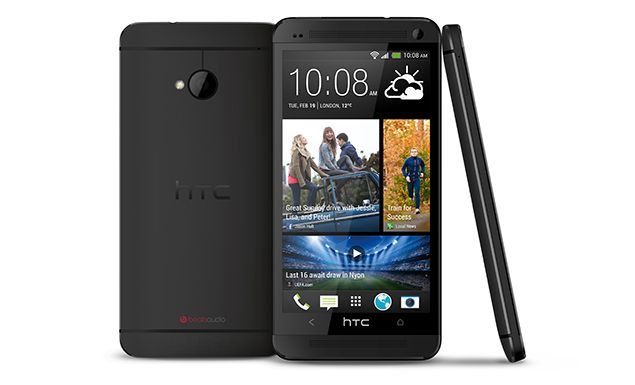The HTC One has been officially unveiled at parallel launch events in London and New York on Tuesday, as the Taiwanese company looks to fight back against Samsung to take the Android crown.
Following much rumour and speculation, Peter Chou, CEO of HTC, took to the stage in London to reveal the new smartphone, previously known as the HTC M7.
The specs of the new handset make impressive reading, with HTC pulling out all the stops to not only give customers the latest hardware, but also package it in a slick design.
Graham Wheeler, director of commercialisation product management at HTC, tells us that the HTC One has an aluminium construction which has meant HTC had to overcome any issues with the metal body blocking signal to the smartphone's internal wireless components.
It's an LTE handset, but uses some clever dual antenna switching technology to resolve any problems with "death grip". You'll also find it supports the latest Wi-Fi 802.11ac as well as the legacy bands, Bluetooth, NFC and also brings back IR in a bid to take over your TV.
The body is only 9mm thick at its fattest point, but it's the 4.7-inch IPS LCD display on the front that will draw admiring glances. Topped with Corning Gorilla Glass, it has a resolution of 1920 x 1080 pixels, giving you a sharp 468ppi pixel density.

Sitting at the heart of the phone is a 1.7GHz Qualcomm Snapdragon 600 quad-core processor, backed by 2GB of RAM. There is no microSD card slot, as is typical for HTC's flagship handsets, but you'll find 32GB of internal memory when it hits the market in the UK, along with 25GB of cloud-based Dropbox storage.
There will also be a 64GB version of the HTC One, which will be coming to some international markets, but it's been confirmed to us that it's not going to be carried by networks in the UK.
There's a 2300mAh battery on board too, which is one of the highest capacities we've seen from HTC, so the HTC One should stand a better chance of making it through the day than the HTC One X ever did.
But the biggest focus of the HTC One is not so much its raw specs, but on the changes that HTC has made. Looking to differentiate, HTC has taken a novel approach to the rear camera, which arrives with a 4-megapixel sensor, promising to beat rivals with 8 or 13-megapixels when it comes to quality.
To achieve this, HTC is turning to the Ultrapixel - or rather, using a sensor made up of larger-than-average "pixels" than those of rivals. The aim is for better performance and resulting image quality, rather than just competing by numbers on the spec sheet.
READ: Ultrapixels: How HTC wants to redefine the smartphone camera
But the technicalities of the camera are just one aspect: the application is something else. A new shooting mode known as Zoe Camera is being introduced that looks to give you a cool zero-editing option for photos and video, so you can almost instantly have a stylised video-come-slideshow spin-out of any set of photos.
The name is derived from the zoetrope and it's hugely impressive in the way that it will take any set of photos, draw out animation, cut, set it to music and stylise it with zero input from you. It literally has to be seen to be believed.
That's not the only change, however, as the HTC One launches with Sense 5 sitting on Android 4.1.2. Sense 5 is a lighter take on Sense than ever before - it looks like HTC has taken on board the criticism of its previous devices.
But there's another headline feature: Blink Feed. This smart aggregation tool is aptly named and designed to give you glance-and-go home page positioned content, tailored to your specifications.
HTC had also promised to focus on audio. With Beats having been a feature of HTC devices over the past few years, now HTC is introducing Boomsound. That's right, Boomsound. With twin front-facing speakers, it promises to sound great, while also introducing lyrics to your music so you can sing along.
In the UK we’ve had it confirmed that all networks and retailers will be stocking the HTC One, available from 15 March, in black or silver finishes.
READ: Hands-on: HTC One review

